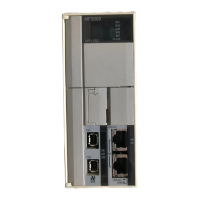6.6 Position Control
6.6.2 CLR (Position Deviation Clear) Signal Function and Settings
6-30
6.6.2
CLR (Position Deviation Clear) Signal Function and Set-
tings
The CLR (Position Deviation Clear) signal is used to clear the deviation counter in the SERVO-
PACK.
As long as the CLR signal is ON, the deviation counter will be 0, so a position loop will not be
formed.
CLR (Position Deviation Clear) Signal
Setting the Form of the CLR (Position Deviation Clear) Sig-
nal
You set the CLR signal form to use to clear the deviation counter in Pn200 = n.X (Clear
Signal Form).
Deviation counter
The deviation counter counts the deviation between the reference input pulses and the feedback
pulses from the encoder (i.e., the accumulated pulses).
Typ e Signal Connector Pin No. Name
Input
CLR CN1-15
Position deviation clear input
/CLR CN1-14
Parameter Reference Form Clear Timing
When
Enabled
Classification
Pn200
n.0
(default setting)
Clear position deviation
when the signal is at high
level.
After restart Setup
n.
1
Clear position deviation
on the rising edge of the
signal.
n.
2
Clear position deviation
when the signal is at low
level.
n.3
Clear position deviation
on the falling edge of the
signal.
The pulse width of the CLR signal must meet the following condition.
• If Pn200 = n.X is set to 0 or 2, the width of the CLR signal must be at least 250 μs to
reset the deviation counter.
• If Pn200 = n.X is set to 1 or 3, the width of the CLR signal must be at least 20 μs to
reset the deviation counter.
CLR
(CN1-15)
Cleared.
ON
CLR
(CN1-15)
ON
Cleared here just once.
CLR
(CN1-15)
OFF
Cleared.
CLR
(CN1-15)
Cleared here just once.
OFF

